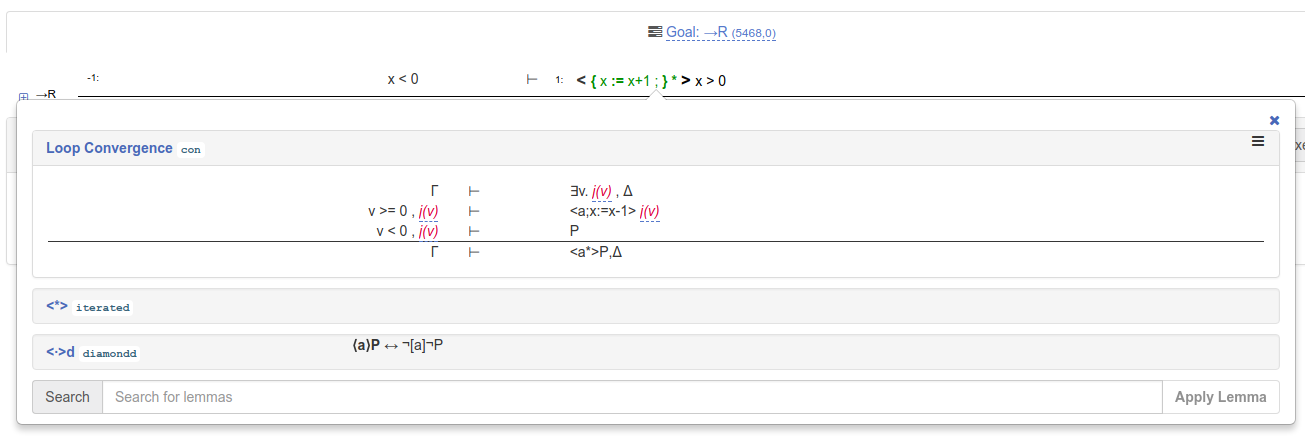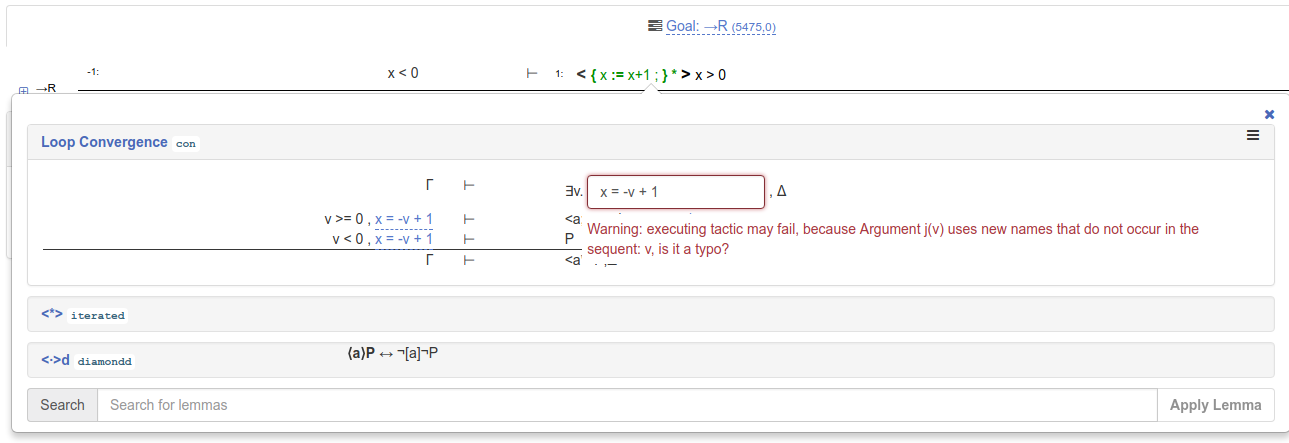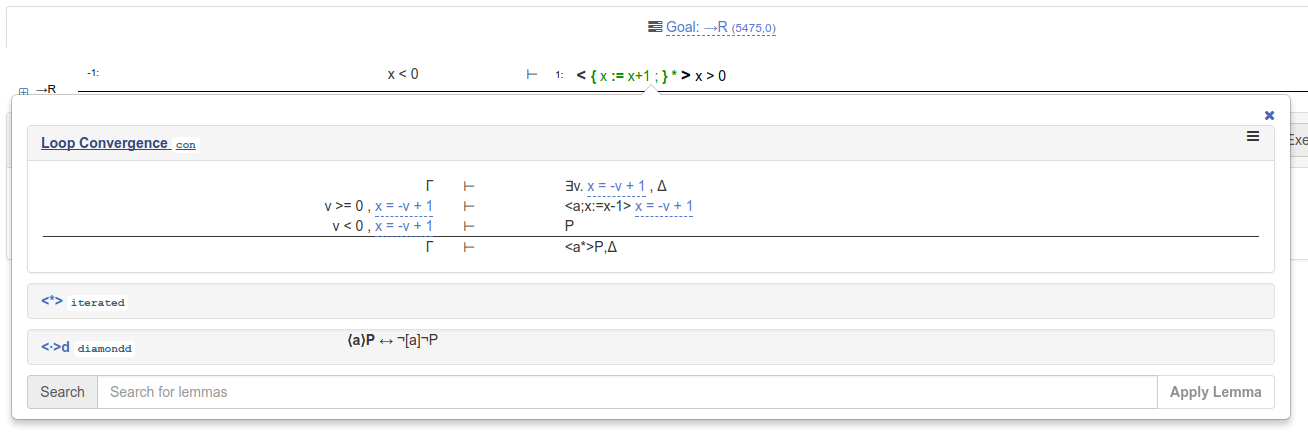Loop Convergence Proofs in KeYmaera X
This is a brief tutorial on implementing loop convergence proofs in KeYmaera X. I’ll assume you already know all about loop variants and just want to get started using this proof technique in KeYmaera X / dynamic logic.
I’ll use a very simple theorem as the running example:
x < 0 -> <{x:=x+1;}*>x>0
Intuitively, the formula states that if x<0 initially, then after repeating x := x + 1
some number of times, we find a state where x>0.
Proving this property requires finding a loop variant j(v) and using this variant together with the
loop convergence proof rule:

For this model, the loop variant x = -v + 1 is sufficient. To use the proof rule with this loop variant,
click on the web form and enter the variant in the web form. You might get a warning message:

You can ignore this warning message by clicking anywhere outside of the warning message box. Then, click on the proof rule to execute the loop convergence proof step:

Alternatively, you can simply type the
con({`x=-v+1`}, 1)
tactic into the tactic editor box:

You’ll now have three goals, two of which are arithmetic and one of which requires a single
application of assignd (diamond assign axiom) before cosing.
The final tactic:
implyR(1) ; con({`x=-v+1`}, 1) ; <(
QE
,
assignd(1) ; QE
,
QE
)